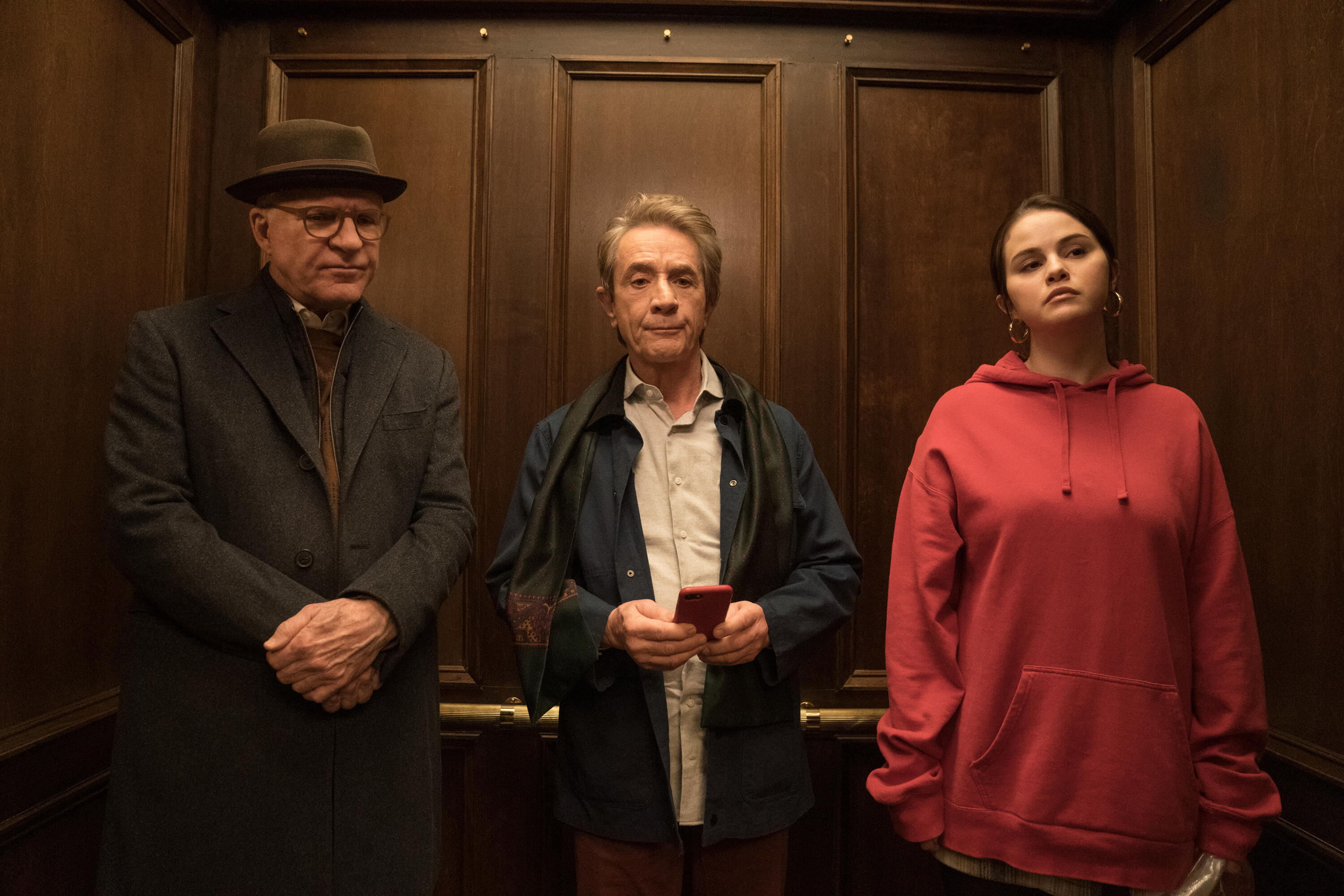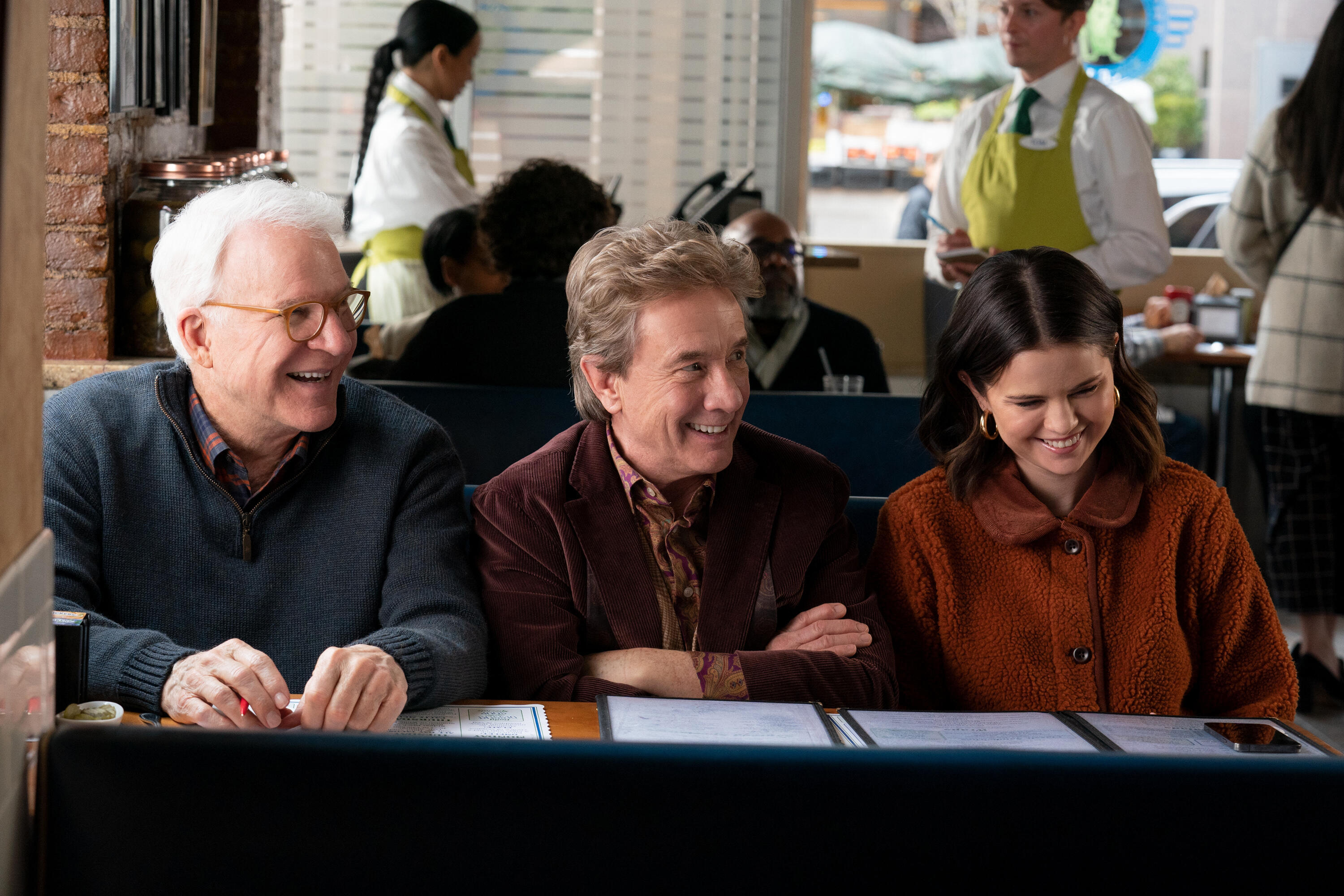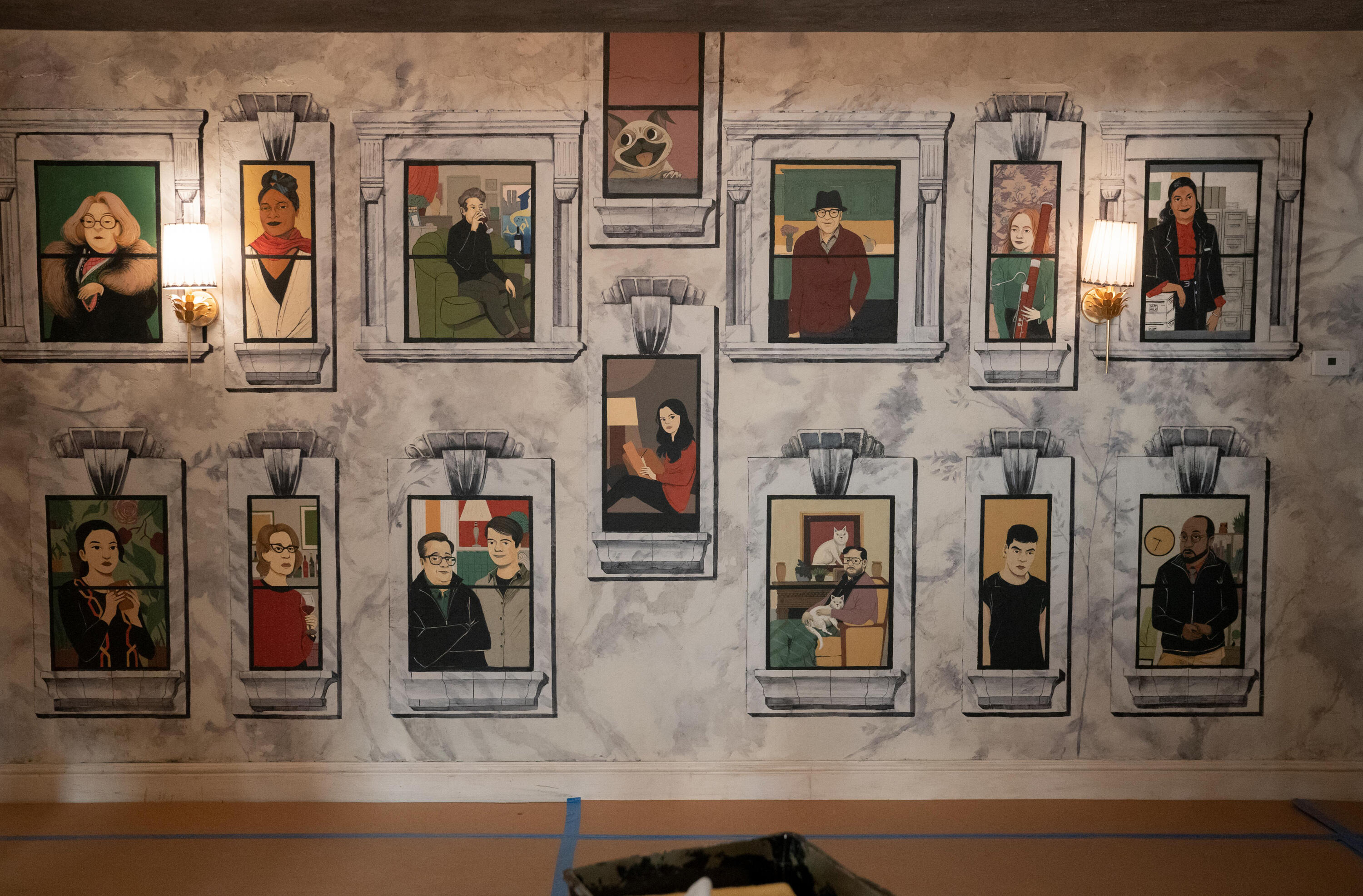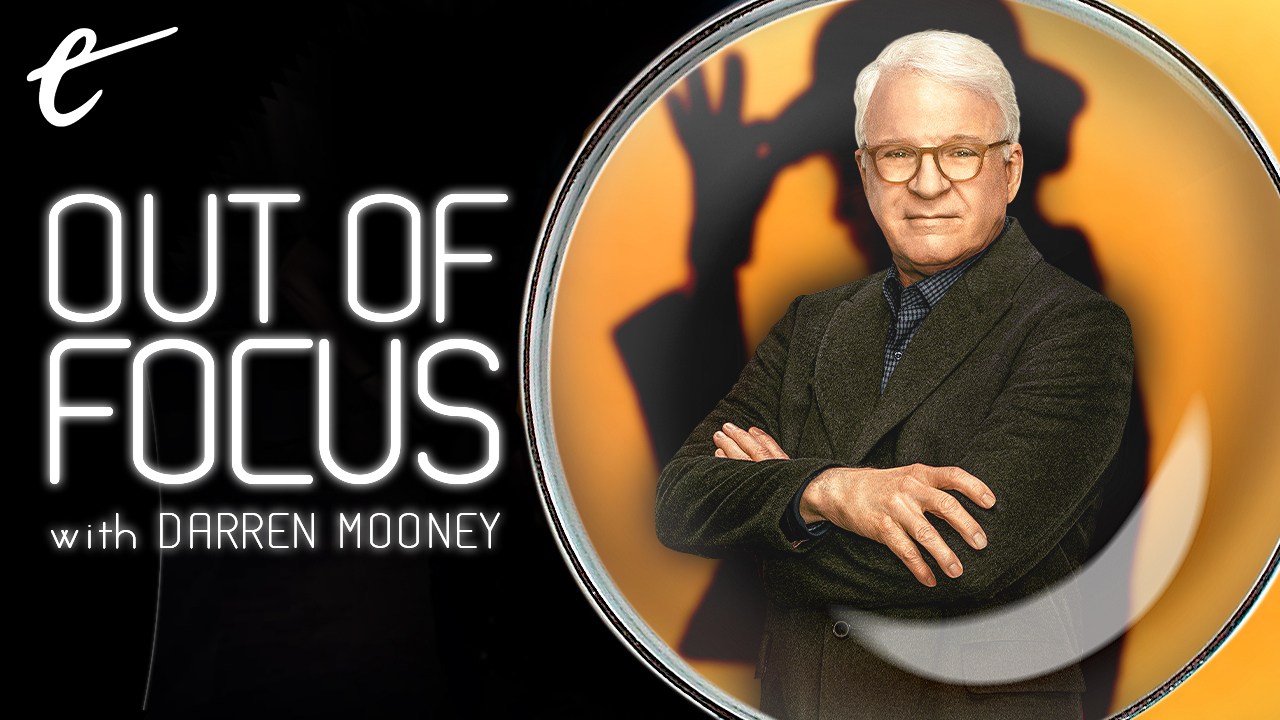With the third season of Only Murders in the Building underway, it seems like a good opportunity to take a look back at the show’s fascinating sophomoric season.
Only Murders in the Building is one the genuine “surprise” successes of the modern media era, a word-of-mouth hit that managed to break out of the streaming bubble. According to Hulu Originals President Craig Erwich, the show was “the most-watched comedy ever on Hulu, by a good measure”, even beating library titles like Gilmore Girls. Its second season outperformed one of Disney’s signature brands, even charting ahead of She-Hulk: Attorney at Law.
The first season is a charming, albeit fairly straightforward, mystery. Set in an upper crust New York apartment building called the Arconia, loosely modelled on the real-life Belnord, Only Murders in the Building follows a trio of crime-solving podcasters: veteran cop show lead Charles-Haden Savage (Steve Martin), failed Broadway director Oliver Putnam (Martin Short) and young artist Mabel Mora (Selena Gomez). In the first season, they investigate the murder of resident Tim Kono (Julian Cihi).
Only Murders in the Building is, to put it simply, an incredibly charming show. The casting of Martin and Short does a lot of the heavy lifting. The duo has been collaborating for decades, starring together in movies like The Three Amigos and the Father of the Bride sequels. They also tour as a comedy double act, promising “an evening you will forget for the rest of your life.” Gomez proves a more-than-capable millennial straight man to her two comedy legend co-stars.
The first season of Only Murders in the Building offers a fairly conventional murder mystery. There are plenty of dark secrets revealed about the inhabitants of the exclusive apartment building, such as the black-market dealings of restaurateur Teddy Dimas (Nathan Lane). There are the obligatory red herrings that lead the trio astray, such as a tangent involving the building’s resident celebrity, Sting (himself). Ultimately, the killer is revealed to be Charles’ lover, bassoonist Jan Bellows (Amy Ryan).

Only Murders In The Building — “Persons of Interest” – Episode 201 — Welcome home, Arconiacs! Minutes after Season 1’s finale, Charles, Oliver and Mabel are now implicated in the murder of Board President, Bunny Folger. They must choose whether to lay low or risk their safety by catching the killer themselves. As they grapple with that choice, fireworks ensue. Charles (Steve Martin), Oliver (Martin Short) and Mabel (Selena Gomez), shown. (Photo by: Barbara Nitke/Hulu)
However, as tends to be the way with successful and breakout television shows, the second season is decidedly more complex and reflexive. The show remains as charming and accessible as ever, but it turns its focus inwards. While the eponymous podcast was treated largely as a plot device in the first season, a way to bring the leading trio together and a framing device for voiceover bookends on various episodes, the second season is much more interested in the industry and its ethics.
”True crime” podcasts are a huge industry. Serial is very much the standard bearer here. Described as “podcasting’s first breakout hit”, it was the fastest podcast to hit 5m downloads with the New York Times reportedly paying “about $25m” to buy the production company behind it. The genre only became more popular during the global pandemic, with a Pew Research survey from June suggesting that “true crime” accounted for nearly a quarter of top-ranked podcasts in America.
These podcasts can be incredibly lucrative. Karen Kilgariff and Georgia Hardstark, cohosts of My Favorite Murder, reportedly earned $15m in 2019. Even outside of the overlap with the resurgent interest in true crime film and television, podcasts such as Dirty John and The Dropout were adapted directly into successful television shows. This is to say nothing of the sponsorship deals that such podcasts can strike with brands desperate to reach a loyal, obsessive and attentive audience.
These podcasts can have very serious real-world implications. Again, Serial is the most obvious case study, with the podcast helping to attract public attention to the case of Adnan Syed, who was recently exonerated two decades after being convicted for the murder of Hae Min Lee. Syed is the most high-profile example, but podcasts also played a role in freeing Kaj Linna, Cain Joshua Storey and Darrell Lee Clark. Podcasts have also helped lead to convictions, like that of Paul Flores.
As such, the industry holds a lot of power and influence. “True crime” podcasts are, to put it mildly, an ethical minefield, even before getting into issues around the exploitation of real people’s trauma as entertainment. The young industry, often driven by amateur sleuths, has been beset with allegations of plagiarism, racial blind spots and a potentially problematic relationship with law enforcement. As “cozy” and “oddly comforting” as the genre might be, it’s also complicated.

Only Murders In The Building — “Persons of Interest” – Episode 201 — Welcome home, Arconiacs! Minutes after Season 1’s finale, Charles, Oliver and Mabel are now implicated in the murder of Board President, Bunny Folger. They must choose whether to lay low or risk their safety by catching the killer themselves. As they grapple with that choice, fireworks ensue. Cinda (Tina Fey), shown. (Photo by: Craig Blankenhorn/Hulu)
Without sacrificing its gentle comedic energy, the second season of Only Murders in the Building grapples with this thorniness in an interesting way. In particular, the second season is preoccupied with the voyeurism and the exploitation that underpins so much of the modern interest in true crime. This is most obvious in how the show treats its three lead characters. During the first season, the trio were presented as outside observers. The second season makes them subjects.
The second season of Only Murders in the Building is driven by the murder of Bunny Folger (Jayne Houdyshell), the board president of the Arconia. During the first season, Bunny was an antagonist of the trio. When she is murdered in Mabel’s apartment with Mabel’s knitting needles, it becomes clear that somebody is trying to frame Charles, Oliver and Mabel for the crime. They are no longer the investigators operating at a remove from the case, they are thrown right into the mix.
Throughout the second season, Only Murders in the Building places its leads in focus. They are constantly being watched and scrutinized. They discover a network of secret corridors running through the Arconia, allowing the killer to move from apartment to apartment and spy on the building’s inhabitants. Charles discovers a painting of his father, engaged in a torrid extramarital love affair. When Mabel is attacked on a train and defends herself, misleading footage goes viral.
Just as Charles, Oliver and Mabel used the death of Tim Kino to generate content in the first season, the second season finds the trio being exploited in a similar manner. They deal with a collection of increasingly impatient fans who run their fan site, The Itty-Bitty Omit-Bitty Committee. Mabel strikes up a relationship with an artist named Alice (Cara Delevingne), only to discover that Alice is building an art exhibit around her, “looking at [her] trauma through a fine-art lens.”

Only Murders In The Building — “I Know Who Did It” – Episode 210 — One question remains: Who did it??? Oh, who are we kidding — there’s a few more questions raised, too. Charles (Steve Martin), Oliver (Martin Short) and Mabel (Selena Gomez), shown. (Photo by: Patrick Harbron/Hulu)
In the first season, the three leads bond over their shared affection for the true crime podcast All Is Not OK in Oklahoma, hosted by Cinda Canning (Tina Fey) with a great deal of help from her put-upon assistant Poppy White (Adina Verson). It delves into the disappearance of Becky Butler, a young woman from Oklahoma. This obviously exists at a distance from these three inhabitants of a luxurious New York City apartment block, and so they can enjoy it.
During the first season, Cinda is presented as a somewhat distant figure. The trio pay her a visit looking for advice in starting their own podcast, but she is largely filtered through media. Her voice is heard on clips from All is Not OK in Oklahoma and she even appears on The Tonight Show Starring Jimmy Fallon. She’s initially an inspiration for the three determined investigators, although they are quickly disillusioned. Cinda is a canny, cynical and self-serving celebrity.
In the second season, the trio find themselves the subject of greater scrutiny from Cinda. She launches her own podcast about Bunny’s death, Only Murderers in the Building. It’s all very clever and very self-referential, a beautiful illustration of the way in which everything becomes commodified. Human lives become narratives to be packaged and sold between Cinda’s plugs for “Gut Milk Lite”, which has “all the flavor of Gut Milk and none of the unexplained crunch.”
Beneath the show’s warmth and charm, there is a biting cynicism to the second season. The season makes an effort to humanize and develop Bunny, devoting an entire episode to her life and back story. However, it also reveals that her murder wasn’t about her at all. Her plans to remodel the Arcania are a red herring. Ultimately, Bunny wasn’t killed for any particular reason. She was killed because the narrative that the killer was constructing needed a victim, and Bunny fit the story being told.

Only Murders In The Building — “I Know Who Did It” – Episode 210 — One question remains: Who did it??? Oh, who are we kidding — there’s a few more questions raised, too. (Photo by: Patrick Harbron/Hulu)
The second season builds to the reveal that All is Not OK in Oklahoma was a lie, which showrunner John Hoffman suggests was the culmination of “a two-season arc” that was “sort of in [his] head” from the outset. Poppy White is really Becky Butler, the subject of that podcast. Becky was a young woman from Oklahoma who grew tired of her life and saw an opportunity to escape it by fashioning it into content for public consumption.
Reinventing herself as Poppy, Becky turned her disappearance into a national story, and then sold that story to Cinda as a way out. That podcast led to the conviction of her former employer, Mayor Tipton (Todd Conner).In New York, working with a crooked cop named Kreps (Michael Rapaport), Becky plotted an even bigger podcast mystery that would lead to much greater success. Bunny’s death was just a paving stone on the road to success.
Coverage of Only Murders in the Building tends to describe the show using words like “gentle”, “smiley-sweet” or “affectionate”, and that is certainly true. It has a very earnest and sincere fondness for most of its characters, and which understands that much of its appeal is rooted in the easy charisma of its three leading performers. However, it’s a very smart show, and the second season has something very interesting and very insightful to say about the genre in which it positioned itself.
The show’s third season has shifted away from podcasting, towards a particularly New York institution: Broadway. This makes sense. The second season took one of the most popular and warmly received celebrations of the “true crime” podcast industry and flipped it on its head, subjecting its protagonists to the horrors of a system that reduces humanity to nothing more than empty content. That’s a true crime, and Only Murders in the Building is smart enough to realize that.






Published: Aug 16, 2023 10:00 am